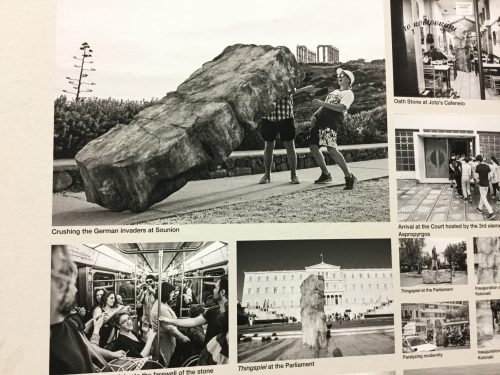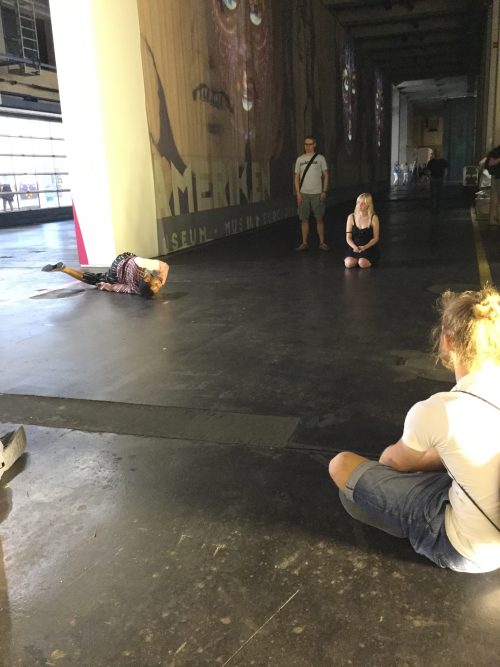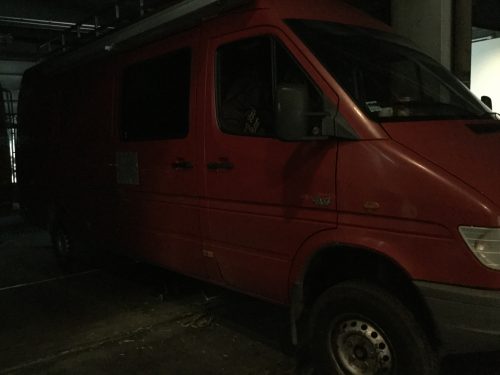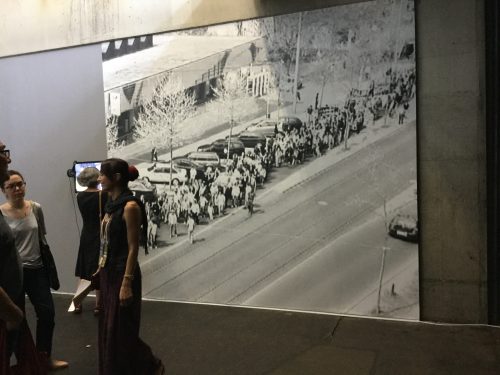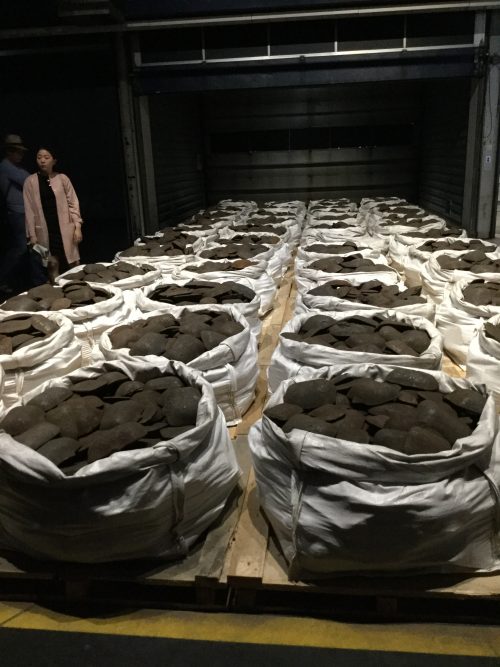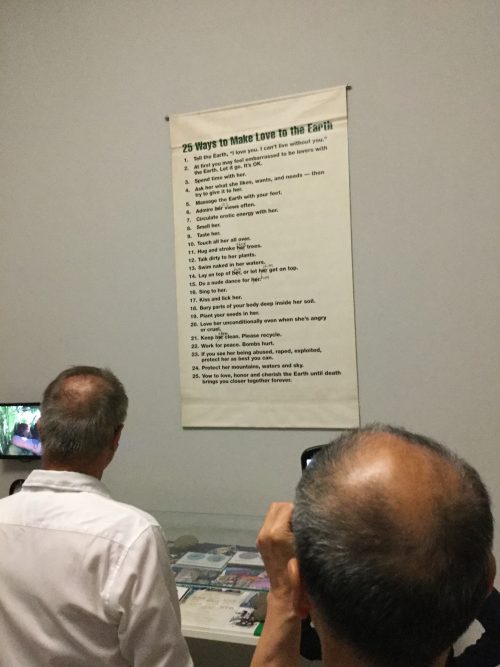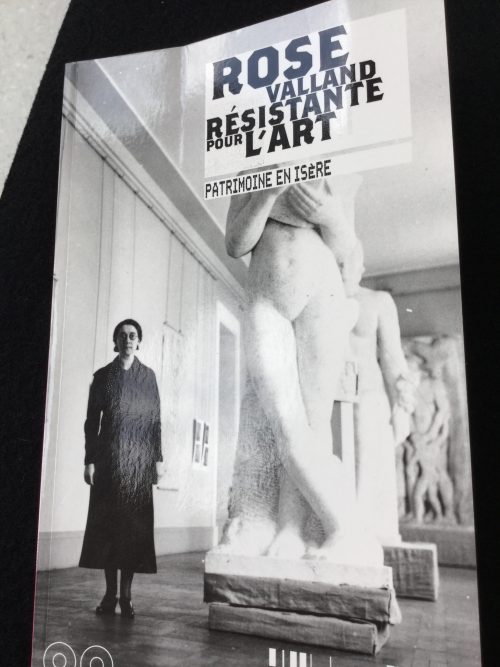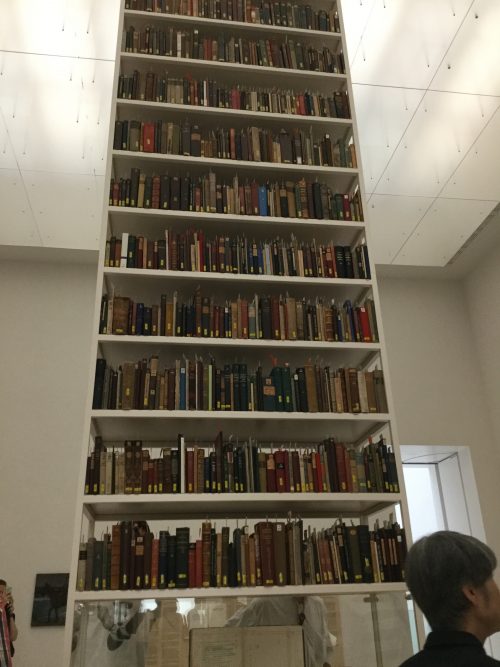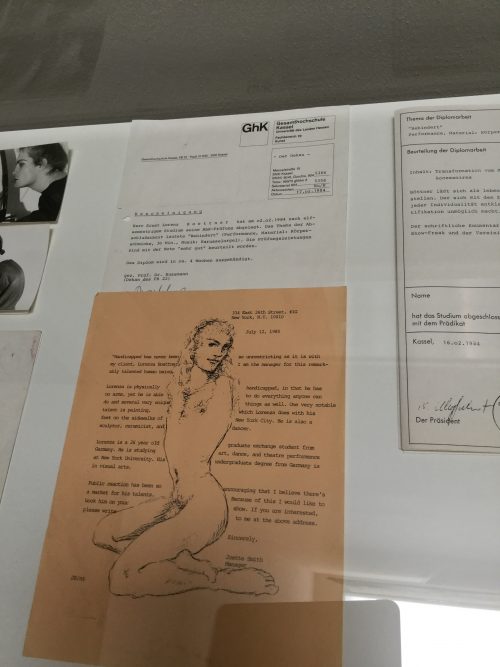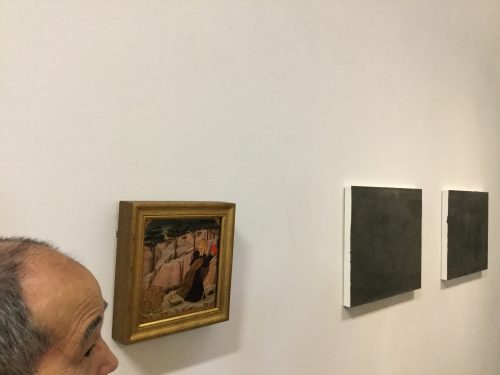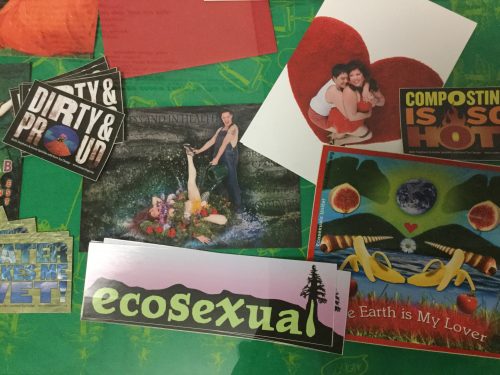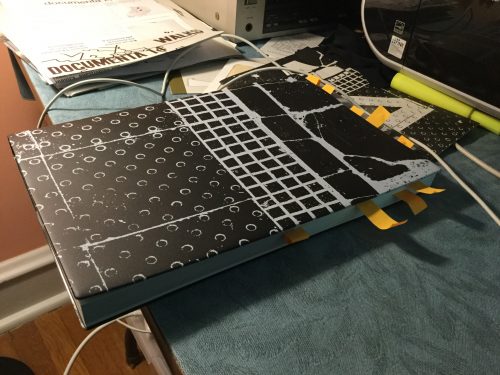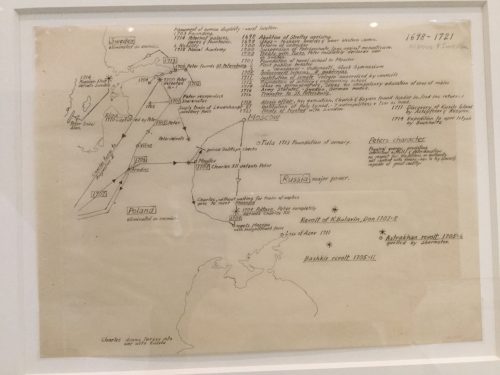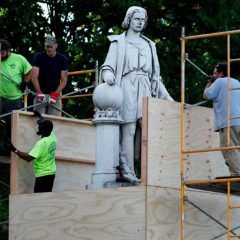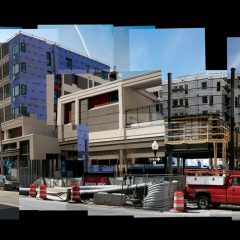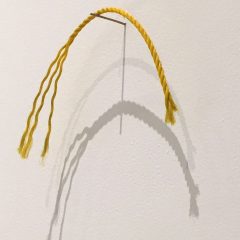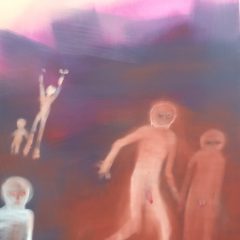I told you previously how lost and displaced I felt wandering around Kassel, Germany, in search of the far-flung Documenta 14.
Even now looking over my shoulder, the best part of Documenta 14 is the chorus walking tours of the art. Unlike tours by a docent, which embody institutional authority and art historical correctness, the chorus tours seek to engage you in a friendly way and help you loosen up to tell your vision of what you see. It’s more about you than about delivering a sanctified truth. This approach to art is not for everyone, I suppose, but surely it could be. My friendly, judgement-free tours of Documenta 14 helped all of us in the group connect with the often-mystifying contemporary art — and with each other.
Part 1 – Õzgür Genc and Neue Neue Galerie
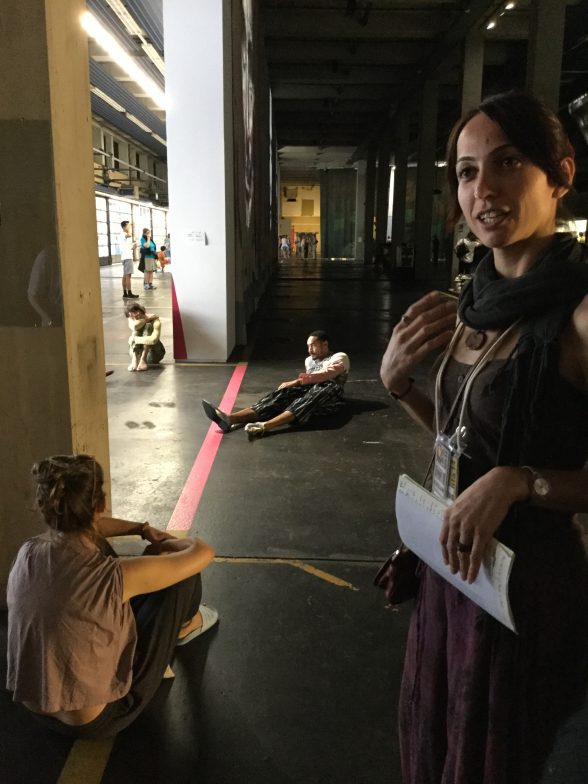
My first chorus tour was with was Õzgür Genc, a Turkish native studying in Germany, who got her masters in social science in Kassel and is moving soon to Berlin to pursue her PhD. She is fantastic and took our group (Americans, British, Kassel natives, a Swede) through Neue Neue Galerie, an empty industrial space that was the old Kassel post office. We spent almost 2 hours in the raw and high ceilinged Neue Neue. The space is perfect for the dark, brooding art under its roof — including a slow motion live performance by Maria Hassabi that is positively riveting and made me think of Goya’s Disasters of War and the writhing of those in pain everywhere.
Some of the art was outstanding (Hassabi’s heart-slowing performance; Dan Peterman’s Ingot Project with 10,000 cast iron ingots (and referencing Germany’s history of casting bullets, cannons and other weapons of war); Roger Bernat/FFF’s “The Place of the Thing” (2017) a project documenting the travel of an “oath stone” from the Ancient Agora, Athens, to Kassel, and its final burial at “Thingplatz.”
And whether or not it is art, which we discussed, it was great to be introduced to a Kassel story, albeit a sad one, of the murder by Neo-Nazis of ten immigrants, all small business owners. Documentation from the Society of Friends of Halit Yozgat, the ninth of the ten immigrant victims, presents his story. Halit Yozgat was shot at 5 PM on April 6, 2006, in his family’s Internet cafe in Kassel. The murder is unsolved although there were witnesses in the cafe, one a secret police officer, who said he saw nothing. The British group Forensic Architecture was commissioned to investigate and that investigation is ongoing. The case is tied up in court. The project fits perfectly with the other documentary projects in the Neue Neue. There is no question in my mind that it is art.
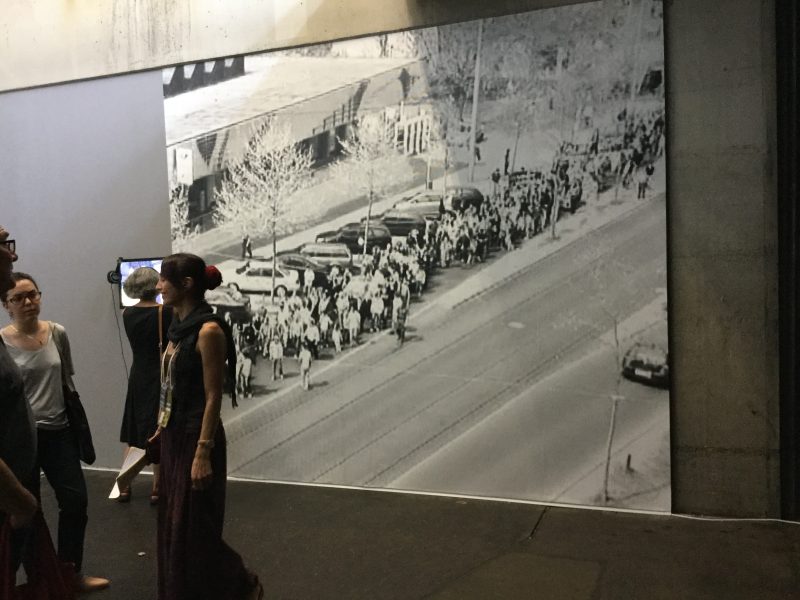
After spending almost 2 hours on the first floor of the sprawling space, the tour was not over! But I needed to find my next tour so peeled off pretty quickly, as did Õzgür, who told me that our group was terrific, engaged and willing to talk. Not all groups are like that, she said, pointing to one group of VIPs who wanted her to talk into a voice recorder; had a list of who and what they wanted to see; and had one hour. (See the bottom of this post for thumbnail pictures from the Neue Neue Galerie tour.)
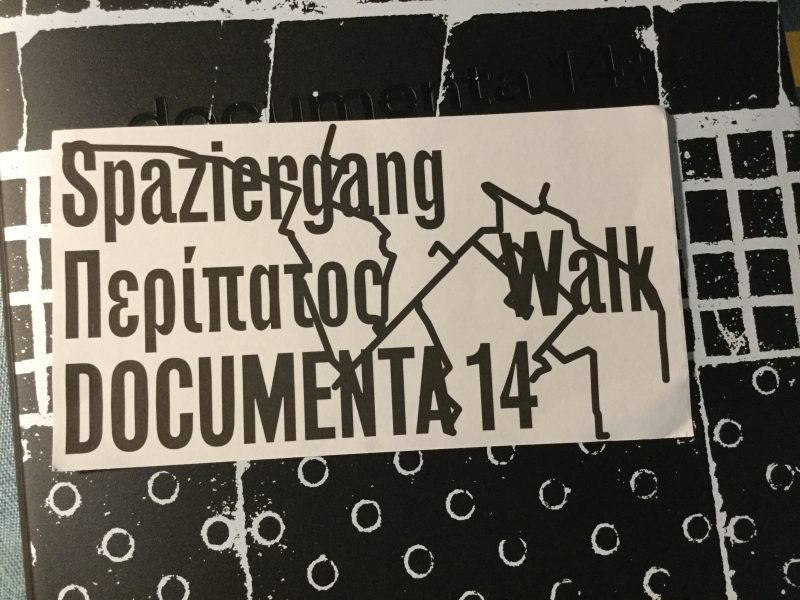
Part 2 – Park Geun Woo and Neue Galerie (not to be confused with the “Neue Neue Galerie”)
Park was our chorus leader at my second tour, of the Neue Galerie. He told us he was based in Berlin, and he later gave me his card. Park Geun Woo works at Makea Industries GmbH, a bio-engineering firm, on a team creating custom DIY limbs…”Individualized prostheses in digital manufacturing.” Yes, wow, that was my reaction, too. Park is an energetic and enthusiastic guide, and our group, comprised of an Asian couple, Suku Park and wife (he’s the Art Director, Arctic Ceramic Center in Posio, Finland), a Brazilian-born Israeli woman and her Brazilian niece (a curator), a Frenchman, a German, an Australian and me, was a little United Nations of art lovers. There was more talking on this tour and more feeling of camaraderie by the end, when we exchanged cards and hugs and said good bye.
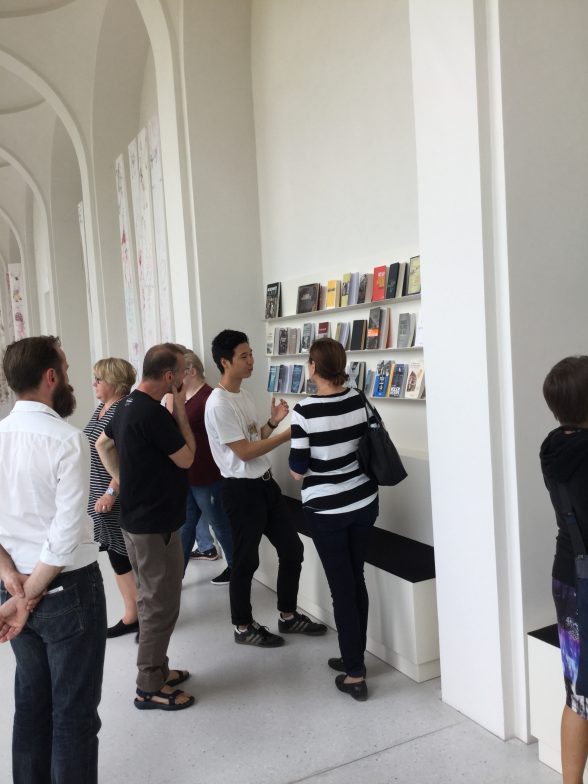
Entering the Neue Galerie — a vast museum of neoclassical proportions — it was clear that we were not going to look at everything. Built originally in the 1870s to house old master works, the building was burned and heavily damaged (along with many works) in 1943 during World War II and later rebuilt and reopened in 1976. The Neue Galerie is another “anchor” museum for Documenta.
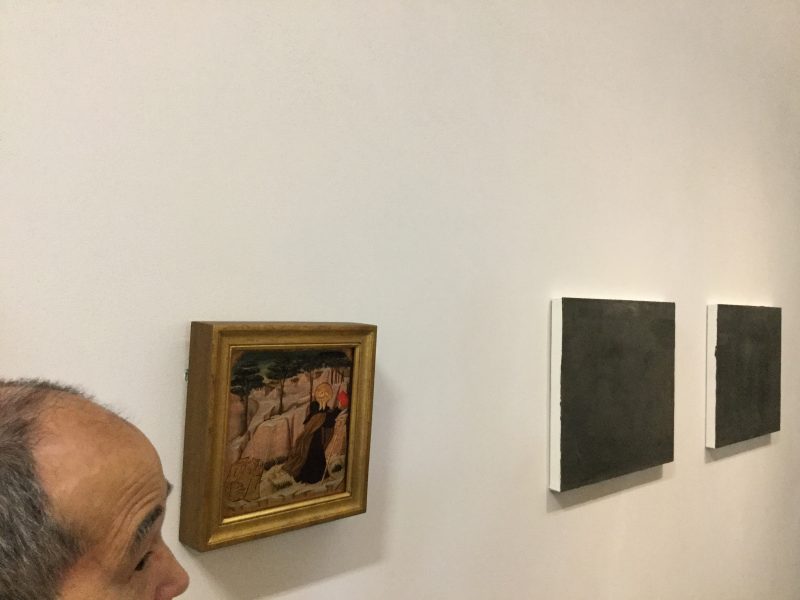
Park steered us through the museum, zeroing in on several things he wanted to focus on. The two hours of the walking tour flew by. First we landed at four small paintings placed together on one wall. Two works are Renaissance paintings of Saint Anthony Abbot by two Renaissance masters; the other two contemporary works are by David Schutter, grey monochrome oil on linen paintings about the same size as the Renaissance works. We had such a lively discussion about what was going on between the modern works (abstract, opaque, process-based) and the ancient (filled with imagery and accessible content) that a guard asked us to quiet down. Upon deciding that the abstract works did have content beyond the color (grey) and the brushstrokes (agitated) and that they created a neutral zone on which a person could impose their thoughts, we moved on.
Next stop, Annie Sprinkle and Beth Stephens’ works, again they brought a lively discussion. The pro-sex, pro-porn, pro-sex-worker-feminist-activist artists’ room of works was focused on ecology, the earth as a body that you could have sex with. Tongue in cheek in some respects but earnestly eco-activist and feminist, it is outstanding to see the wild work in the mix.
A last word and a regret
For me the tours themselves are Documenta 14 in a pure form, involving community, discussion, and a heretofore unprecedented bonding among those who were engaged with this passionate and political art. There still exists a gap between those who love art and think about it a lot (too much?) and those who, when they think of art are either fearful, dismissive, bored or honestly confused. I’d love to see the model of the chorus tours adopted widely at museums and galleries. It’s not THE answer to closing the gap between the art world and the general public but it is an answer and a good one.
Regretfully, I was not able to see the work of the wonderful Berlin-based photographer Akinbode Akinbiyi. The artist was featured in the 2016 Creative Africa exhibition at the PMA, and Artblog interviewed him about his work. His embrace of the whole wide world of Africa through his photographs is unparalleled — he’s a people person and his street scenes document the liveliness of the African streets. See the video, made by the great upcoming videographer, Eli Laban.


